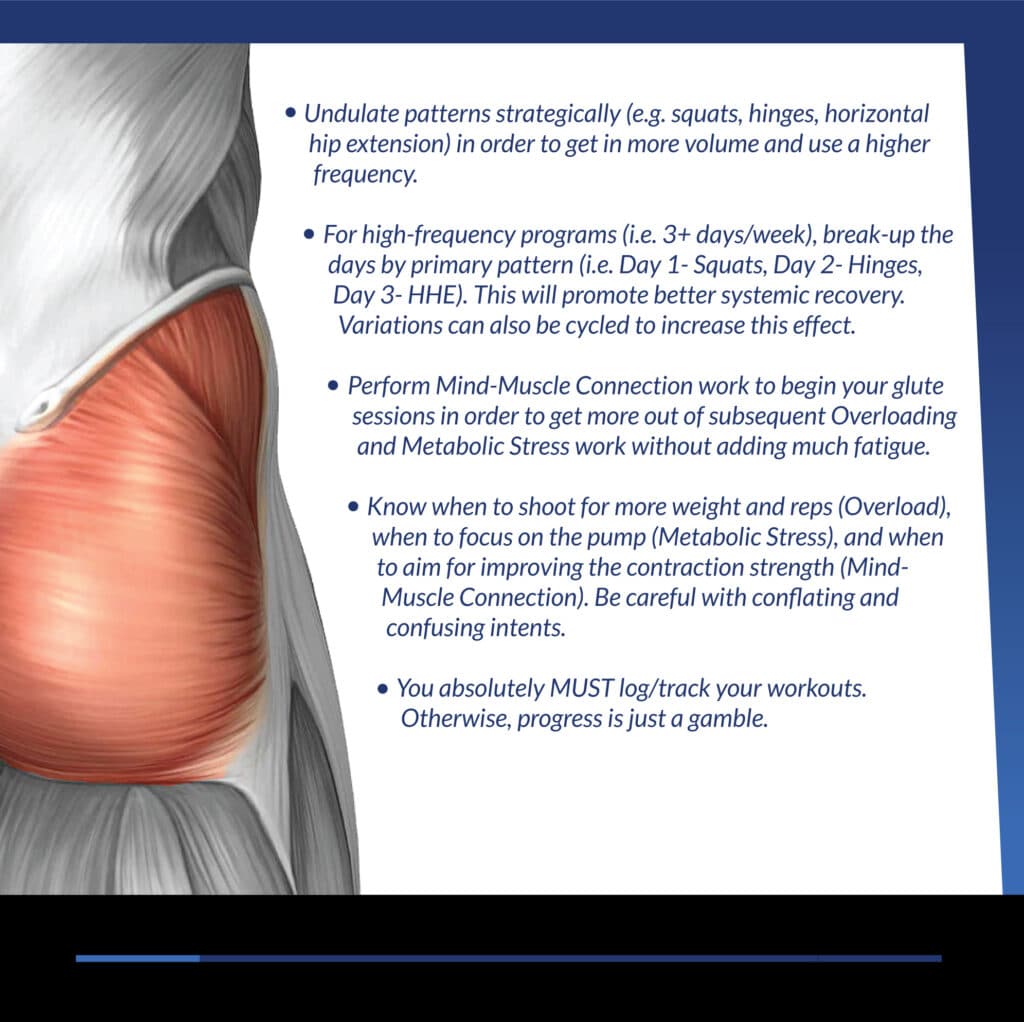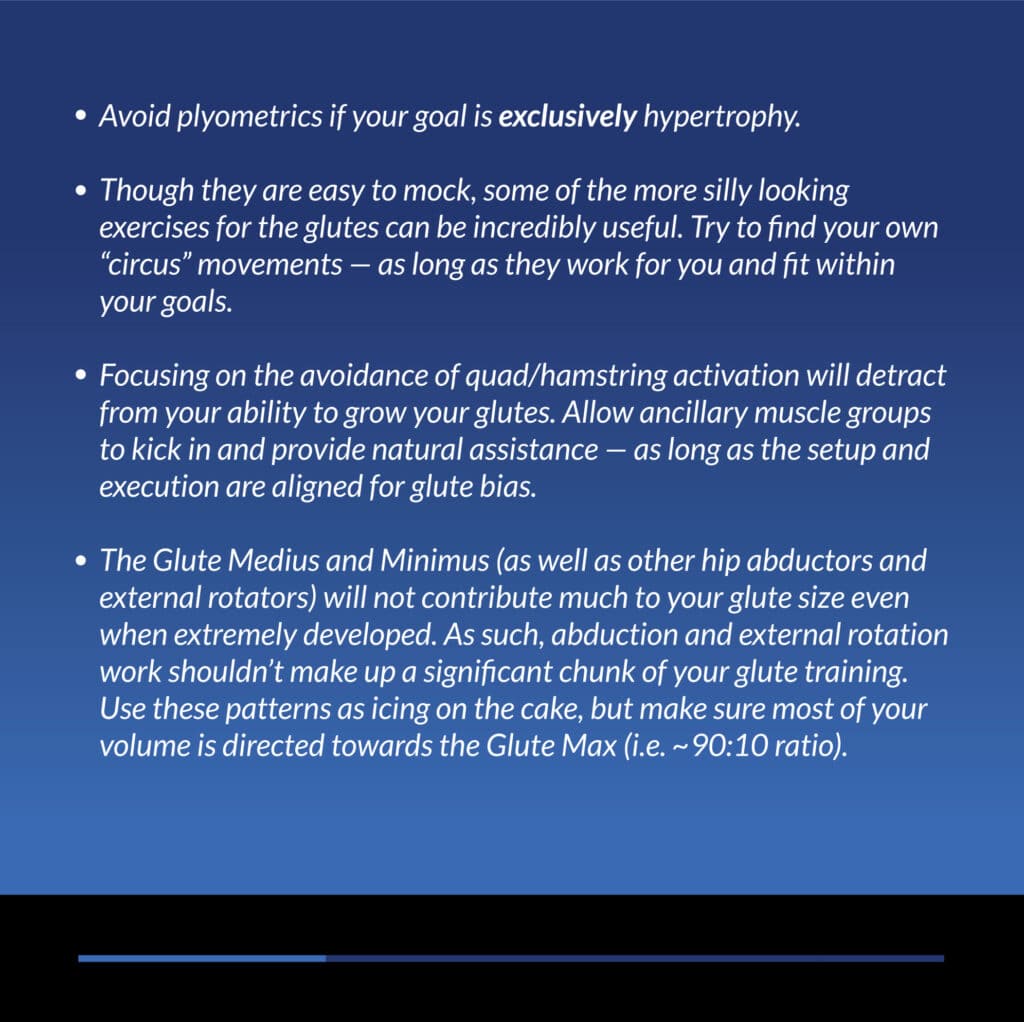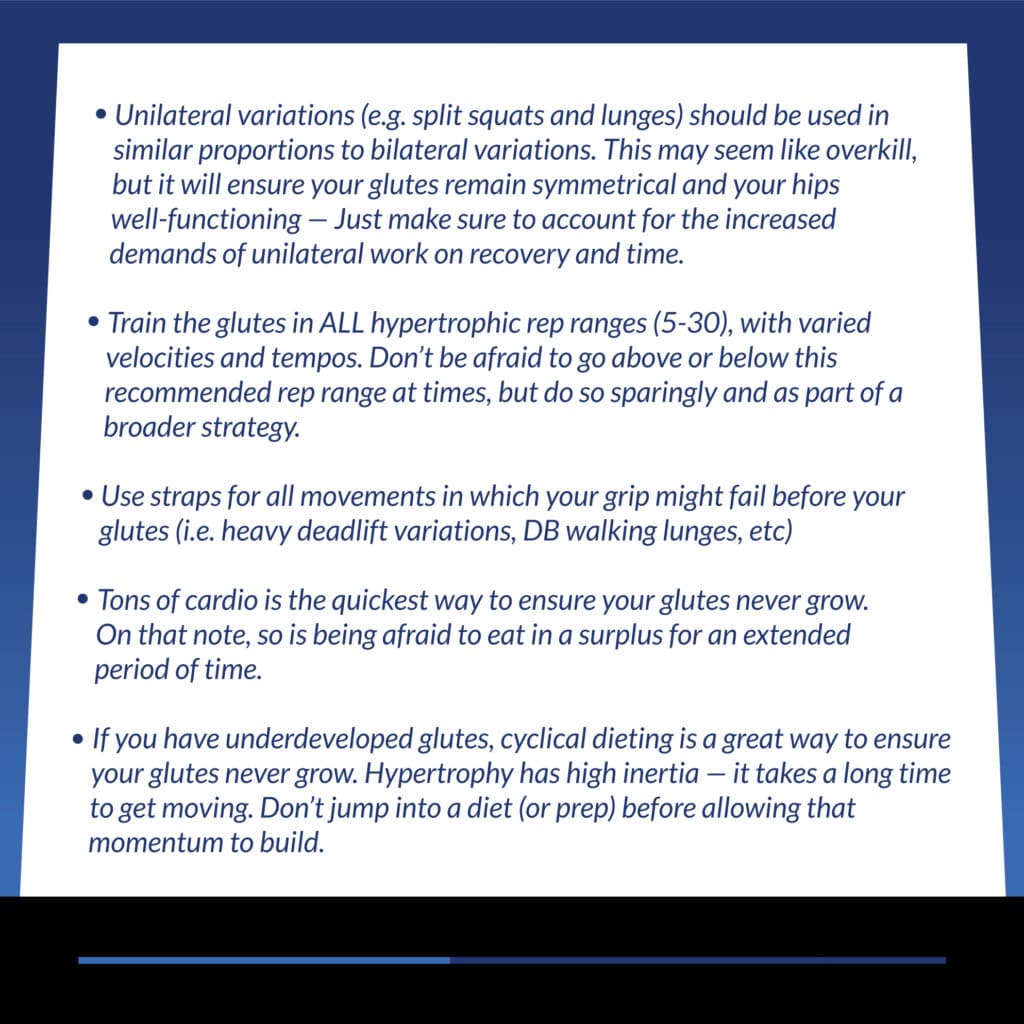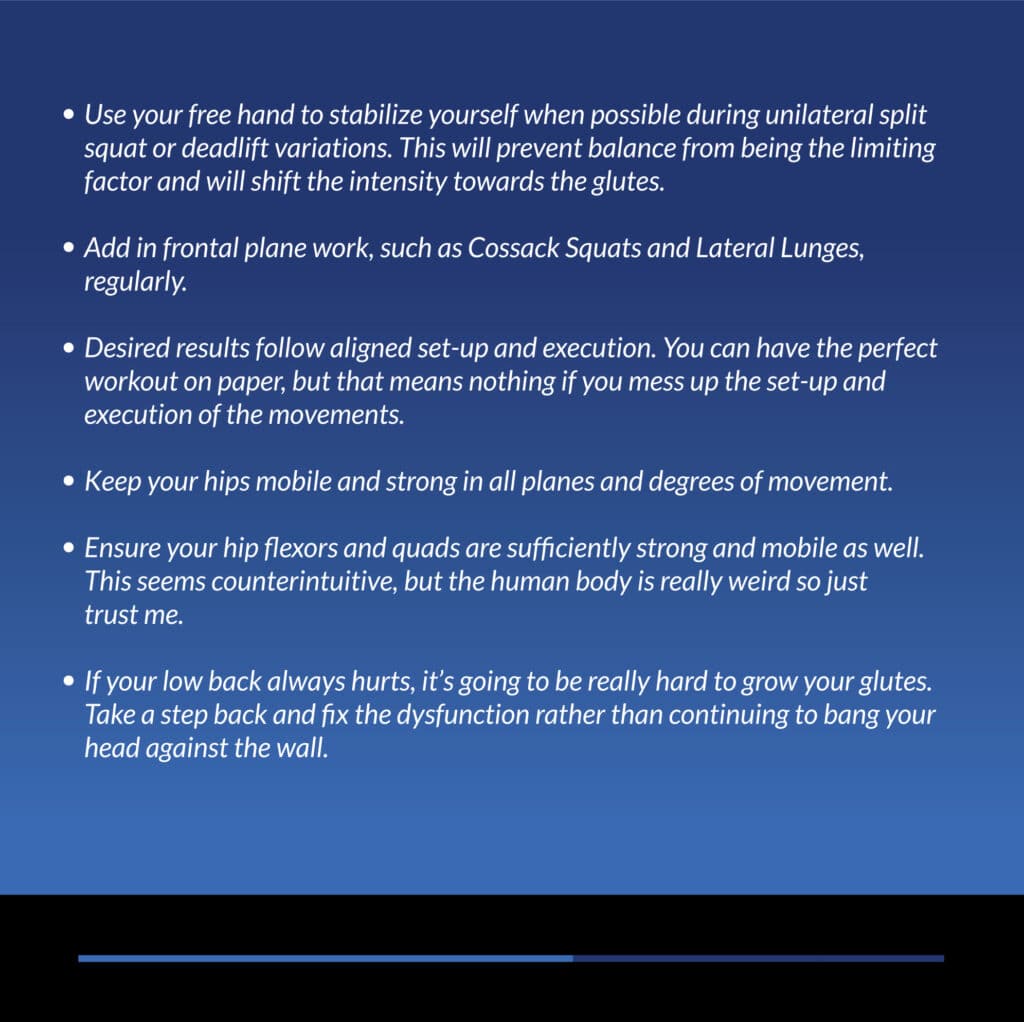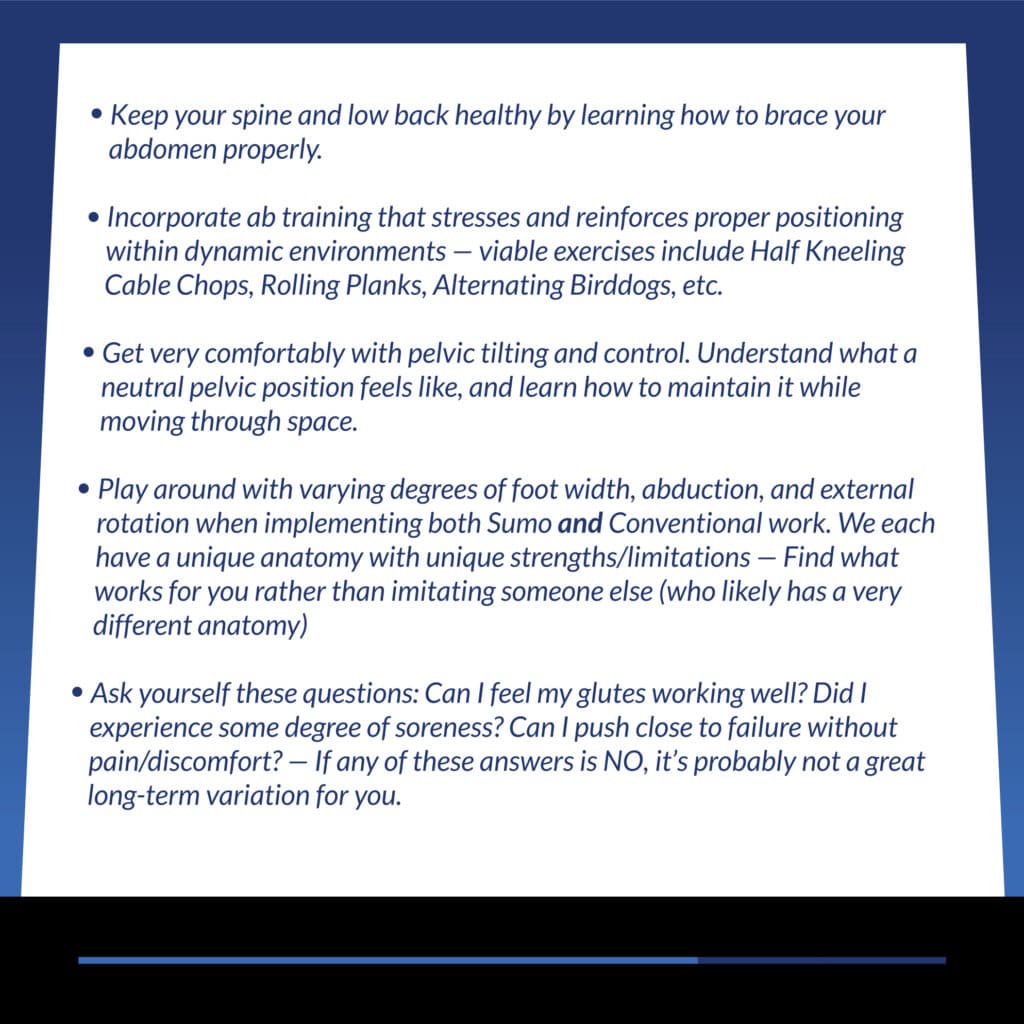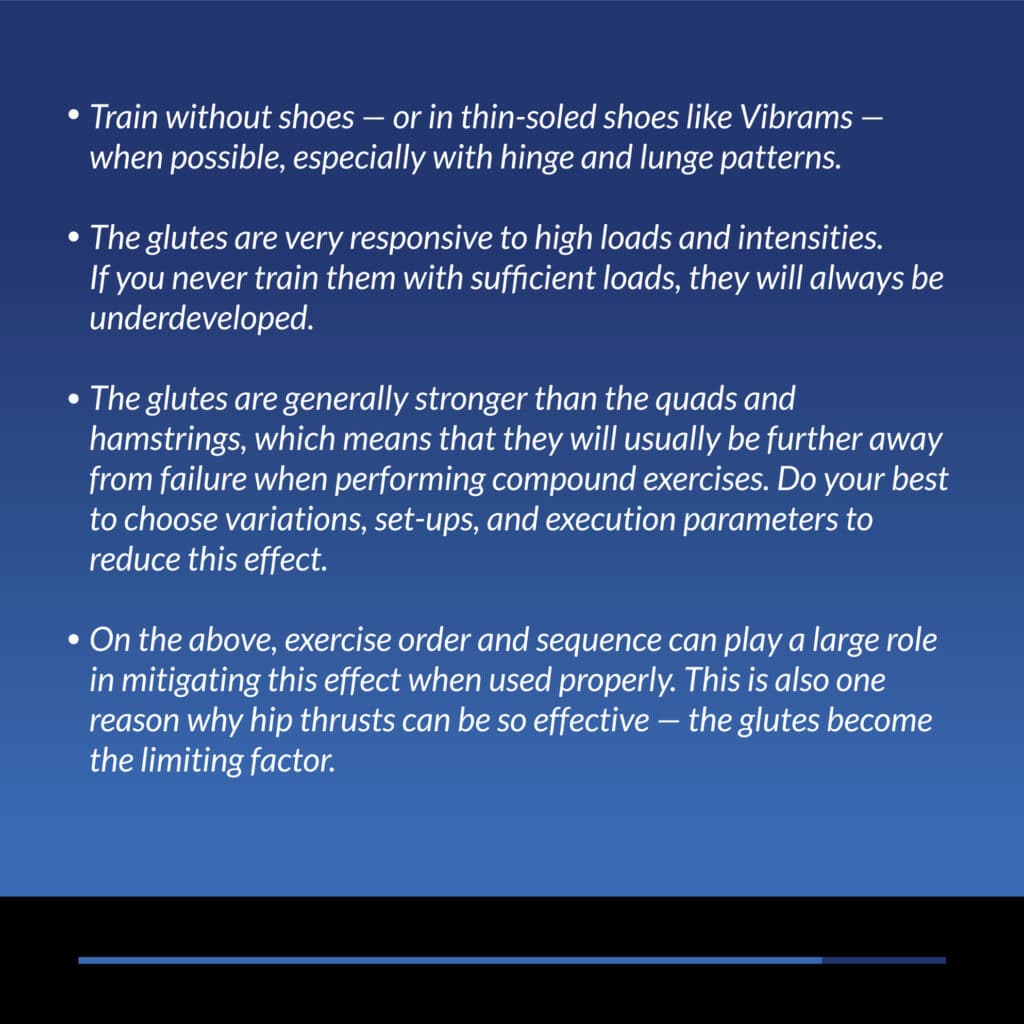- Undulate patterns (i.e. squats, hinges, hip extension) in order to accommodate more volume and higher frequency.
- For high-frequency programs (i.e. 3+ days/week), break up the days to focus on specific patterns (i.e. squats, hinges, HHE) in order to prioritize recovery. Variations can also be cycled through in order to further this effect.
- Perform a MMC movement to begin your glute sessions in order to get more out of your overloading and MS movements.
- Know when to shoot for progressive overload, when to focus on pump (i.e. sarcoplasmic hypertrophy), and when to aim for improving the voluntary contractile strength (i.e. MMC). Be careful with conflating the intent of a movement.
- Avoid plyometrics if your goal is exclusively hypertrophy.
- Though they are easy to mock, some of the more “silly” looking exercises for the glutes can be incredibly useful. Try to find your own “circus movements” as long as they work for you and fit within your goals.
- Too much focus on avoiding quad/hamstring activation will actively detract from your ability to grow your glutes. Allow ancillary muscle groups to kick in as long as the setup/execution are aligned for glute bias.
- The glute medius and minimus (as well as other hip abductors and external rotators) will not contribute much to your glute size even when extremely developed. As such, abduction and external rotation work shouldn’t make up a significant chunk of your glute training. Use these patterns as icing on the cake, but make sure most of your volume is directed towards the glute max (i.e. ~90:10 ratio).
- Unilateral variations (e.g. split squats and lunges) should be used in similar proportions to bilateral variations. This may seem like overkill, but it will ensure your glutes remain symmetrical and your hips well-functioning—Just make sure to account for the affects that unilateral work has on volume and time.
- Train the glutes in ALL hypertrophic rep ranges (5-30), with varied velocities and tempos. Don’t be afraid to go above or below this recommended rep range at times—But do so sparingly and as part of a broader strategy.
- Use straps for all movements in which your grip might fail before your glutes (i.e. heavy deadlift variations, DB walking lunges, etc)
- Use your free hand to stabilize yourself when possible during unilateral split squat or deadlift variations. This will prevent balance from being the limiting factor and will shift the intensity towards the glutes.
- Add in frontal plane work (e.g. Cossack Squats, Lateral Lunges, etc) for improved hip stability/mobility, which will directly carry-over to increased potential for glute development.
- Keep hips mobile and strong in all planes and degrees of movement.
- Additionally, ensure your hip flexors and quads are sufficiently strong and mobile as well.
- Keep your low back healthy and learn how to brace your abdomen properly.
- Incorporate ab training that reinforces proper pelvic positioning under dynamic environment. Things like half kneeling chops, rolling planks, alternating birddogs, etc.
- Get very comfortably with pelvic control/tilting. Understand what a neutral pelvis feels like and how to find this position.
- Play around with varying degrees of foot width, abduction, and external rotation when implementing sumo-stance work. Everyone will have different hip anatomy, and going too wide will actively inhibit your glutes.
- Train without shoes (or in thin-soled shoes like Vibrams) when possible, especially with hinge and lunge patterns.
- Glutes are very responsive to high loads and intensities. If you never train them with sufficient loads, they will always be underdeveloped.
- The glutes are generally stronger than the quads and hamstrings, which means that they will be further away from failure at any given time. Do your best to choose variations, set them up, and execute them in ways that reduce this effect. Exercise order/sequencing can also play a large role in this. This is also why hip thrusts can be so effective.
- Don’t worry so much about finding the perfect exercise or angle or workout or split. Just train your glutes hard with movements that work well for you (i.e. you can feel your glutes working well, you get localized soreness post-workout, you don’t experience pain/discomfort while doing it, etc) and try to get stronger in a variety of rep ranges over a long period of time. Doing this will grow your glutes better than 99% of other strategies but it’s not as sexy so most people can’t follow through with it.
